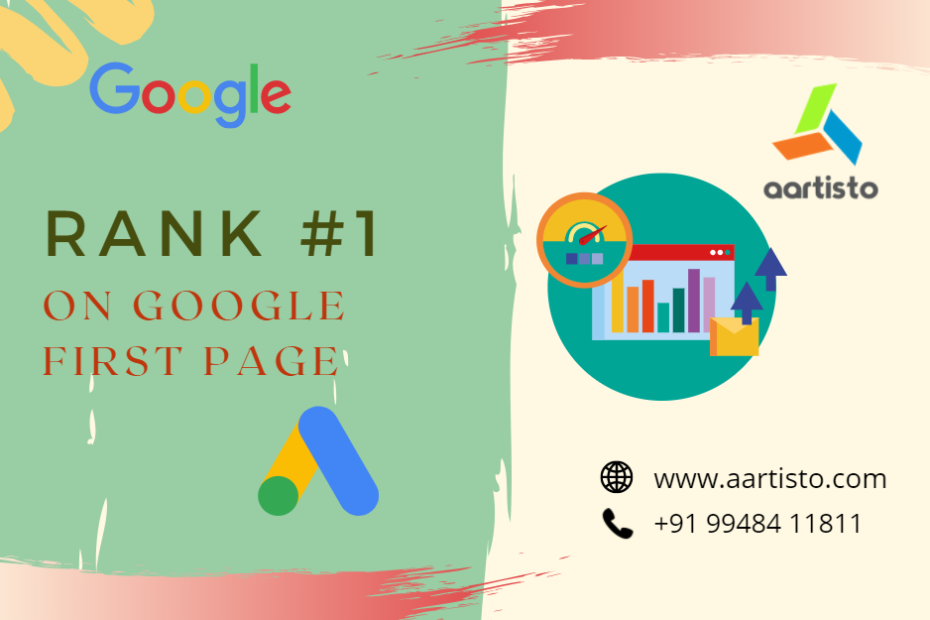Are you tired of trying dozens of SEO strategies, buying tons of different SEO services that guarantee Google first page rankings, buying endless SEO courses?
Follow this simple 7 step process and rank on the first page for keywords that will give you traffic and sales.
Find out where you rank on the google first page
It is important to know how powerful your website is. It also determines your entire SEO strategy.
In Google’s view, the authority of your domain determines what kind of words will bring more traffic to your site.
If your site has more authority, you can usually follow hard words that bring in more traffic, whereas if your domain is not strong SEO wise you should follow keywords that produce less traffic but are easier to rank by weaker domains. Older websites generally have more authority and backlinks compared to fresher websites.
Keyword research smartly
Important research is the process of finding the right keywords.
There are various free and paid tools to help you with this process, but for the convenience of readers, let’s see how you can do this for free:
First, come up with 15-20 keywords that people can search for when searching for your product or service.
Make sure you include both the purpose of the buyer and the purpose of the information. Each keyword must be at least 3 words long.
Figure out the Search intent
Once you’ve typed in your first 5 keywords, you want to find the search purpose behind them. By understanding the purpose of the search, you will know what kind of content you need to create to rank, and what the purpose of the search is:
- Information Purpose – Someone is looking for information. Example – How to send an email to someone, what is email.
- Navigation Purpose – Searching for a specific website. Example – Gmail login, Facebook registration.
- Transaction / Buyer Purpose – Searching to buy something. Example – Buy web hosting and also get insurance quotes.
Create SEO optimized content
Now that you’ve figured out what keywords to target and what kind of content to create for them, it’s really time to create it.
The same SEO optimization rules apply to the blog post or product/service page and these two content types.
Keyword-rich URL
Your URL should always be the keyword you target, and it should not be too long.
Keywords in the title
Your keywords should be in the title of your page/post.
You can avoid using similar words in the title as Google treats similar terms, but having something completely unrelated is bad SEO practice.
Add modifiers to the title
Converters like Best, Best, Cheapest, (current year) in the title help you get extra traffic without extra effort.
Use multimedia such as pictures and videos
Not only is the use of images and videos in your posts beautiful, but it also raises the time a user spends on your site, which is good for SEO.
Get some links
For any google first page to get traffic, you have to do it on the first page of Google. If you are not a big site with tons of power, you will need backlinks (sometimes tons of links) to get the first page to your page.
The two types of links should have are:
Internal links
Internal links are links from other website pages of your site. These are easy to get how many people ignore this.
External links
External links are those links from other sites that are like votes.
If you have more votes, your site will rank higher on Google. Backlinks continue to be a strong ranking factor on Google. But they are difficult to come by on their own.
Track its Google ranking and traffic
The next step is to get real-time feedback on your link-building efforts as you begin to keep track of where your pages rank for their target words.
When you create links, upgrade content, speed up your site or make any other changes to your site, the pages move up or down, giving you insights on which actions help you the most SEO-wise.
Please refresh the page once it arrives
Once your page has reached page 1 for the target keywords, new ranking factors such as click-through rate, stay time will start.
To keep your page on page 1 you need to not only create links but also do the following:
Optimize the title tag and meta description for more clicks from Google
Improving the title and meta tag is like dressing up for an event. People decide how you are before they decide to talk to you (in our case, visit our page)
Improve Dwell time
The time difference between when a user clicks on a search result is Dwell time and when they come to the search results from the website.
Update the content of the pages
By refreshing the page with regular information, users will be more satisfied with your content and will stay on your site longer.
Build internal links
As explained already, creating internal connections helps increase the living time. By linking internally, you give readers something more to read.
Make the content pleasing to the eye
If the page is beautiful and well-designed, it will be easy for readers to absorb what you have on the page.
https://aartisto.com/decode-101-professional-gmail-for-business/
https://aartisto.com/linkedin-marketing-hacks-to-get-more-followers-for-linkedin-company-page/
